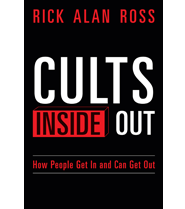Utah is so gay!
Published By admin
‘Salt Lake is a very queer place,’ said the historian J Seth Anderson after he and his husband became the first gay couple to be married in Utah, in 2013. When most non-Utahns think of the state, probably the last thing that comes to mind is ‘gay’. Instead, they might think of the Church of Jesus Christ of Latter-Day Saints (LDS, aka Mormons), whose members constitute 42 per cent of the population. Or maybe they think of Republicans, who outnumber Democrats nearly four to one.
While counterintuitive, Anderson’s statement about Salt Lake City’s queerness is true in most senses of the word. First, Utah defies norms and boundaries. For many who study queer theory, queerness isn’t just about who you love or your sexual identity. It’s also a lens for understanding how society defines what’s considered normal or different, and how these definitions affect different behaviours and groups of people. In that sense, Utah can be seen as queer because it defies or ‘queers’ normative culture in the United States. Second, Salt Lake is simply home to a lot of queer people. In fact, the city has the 13th-highest rate of LGBTI-identifying residents of all US metropolitan areas.
With this in mind, what is it like to be gay in Salt Lake today? In late 2020, I found myself in a conversation at a (primarily LGBTQI+) party in Salt Lake when the question was raised: ‘How many of you served a Church mission or were serious Church members?’ Everyone except me (a never-Mormon Utah native) raised their hand… and then nervously laughed at how much the Mormon Church had shaped their lives. Serving a mission in the LDS Church is a particularly intense commitment, usually requiring 18-24 months of continuous service in a designated location – often far from home – and a substantial reduction in contact with friends and family during that time. And many of the queer people in that conversation with me had dedicated years of their lives to these missions, regularly going to church, attending the Church’s flagship Brigham Young University, and living among communities brought together through affiliation with the Mormons. Even though everyone at the party had since left and often fiercely disavowed the LDS Church, I wondered to myself how much it was still shaping their lives in the present day.
I am a queer Utahn and, even though I was never a member, the LDS Church has significantly influenced my worldview. I grew up in a community where Mormonism was the norm (my home county is 83 per cent LDS, according to the most recent statistics), so Mormonism and my relationship to the faith shaped my understanding of what’s ‘normative’ – the standards or rules considered typical, acceptable or ideal. These standards dictate what behaviours, beliefs and values are seen as ‘normal’ or desirable, and often influence how individuals are expected to think and act. It was only in my mid-20s, when I entered my first serious queer relationship, that I looked back to my time in Utah and immediately recognised the familiar, frustrating feeling that comes with questioning the socially constructed boundaries that determine what is normal vs what is ‘deviant’.
Thinking far beyond my personal experience, the coexistence of Mormonism, conservative politics and queerness in Utah presents many contradictions. On the one hand, queerness weighs heavily in certain readings of LDS Church history due to the since-rejected doctrine of polygamy. In the 19th-century US, polygamy was deemed a sexual deviancy, which forced the Mormons to flee west, out of the Union, to Utah, in order to protect their sexual preferences. Yet some view contemporary, conservative LDS Church policies as deeply homophobic, and Mormons are increasingly identifying with Trumpism (despite important exceptions, which I will detail below).
Herein lies the fascinating paradox: Utah’s queerness isn’t merely about its LGBTQI+ population. Rather, it embodies a deeper, more fundamental queerness rooted in the very fabric of the state’s history, particularly its origins in Mormonism. From its early days of polygamy and unique religious practices, Mormonism has always defied conventional norms. Despite many Utahns’ usually conservative stance towards LGBTQI+ matters, an intrinsic oddity permeates Utah’s culture, creating an environment where queerness, in the broadest sense, can thrive while simultaneously being suppressed or disavowed.
So, how does queerness shape Utah for gay and straight people, and for Mormons and non-Mormons alike?
Walking the streets of Salt Lake City, queerness, Mormonism and conservative politics are visible both in political discourse and in the urban landscape. The city has become something of a theatre where these contradictions play out symbolically. Planned entirely around the LDS Temple, contemporary Salt Lake is marked by religious and political symbolism that can, at times, feel contradictory. When I returned to Utah during the election season in 2020, I was especially struck by the symbolic politics of flags: pride flags flew next to MAGA flags, both flying next to LDS infrastructure throughout the city and state. With Donald Trump’s lead in Utah only widening in 2024, this pattern is emerging once again.
Trump flags that proclaim the wish to make America great again might seem unsurprising given that Utah is consistently a majority Republican state, but this is actually a big change since 2016. Back then, many Mormon Republican Utahns had followed the lead of Utah’s senator Mitt Romney and the then-governor Gary Herbert (both LDS Church members) in rejecting Trump’s politics, turning away from their party’s candidate at an unheard-of scale. In March 2016, only 14 per cent of Utah Republicans polled for Trump. By October that year, Evan McMullin, a Utahn running as an independent against Trump, was poised to win key districts. By the norms of Republican states in 2016, Utah was acting queerly, once again. For many analysts at the time, this was due to Utah’s unique political culture, dominated by the Mormon Church.
Content retrieved from: https://aeon.co/essays/how-come-the-mormon-republican-state-of-utah-is-so-queer.






